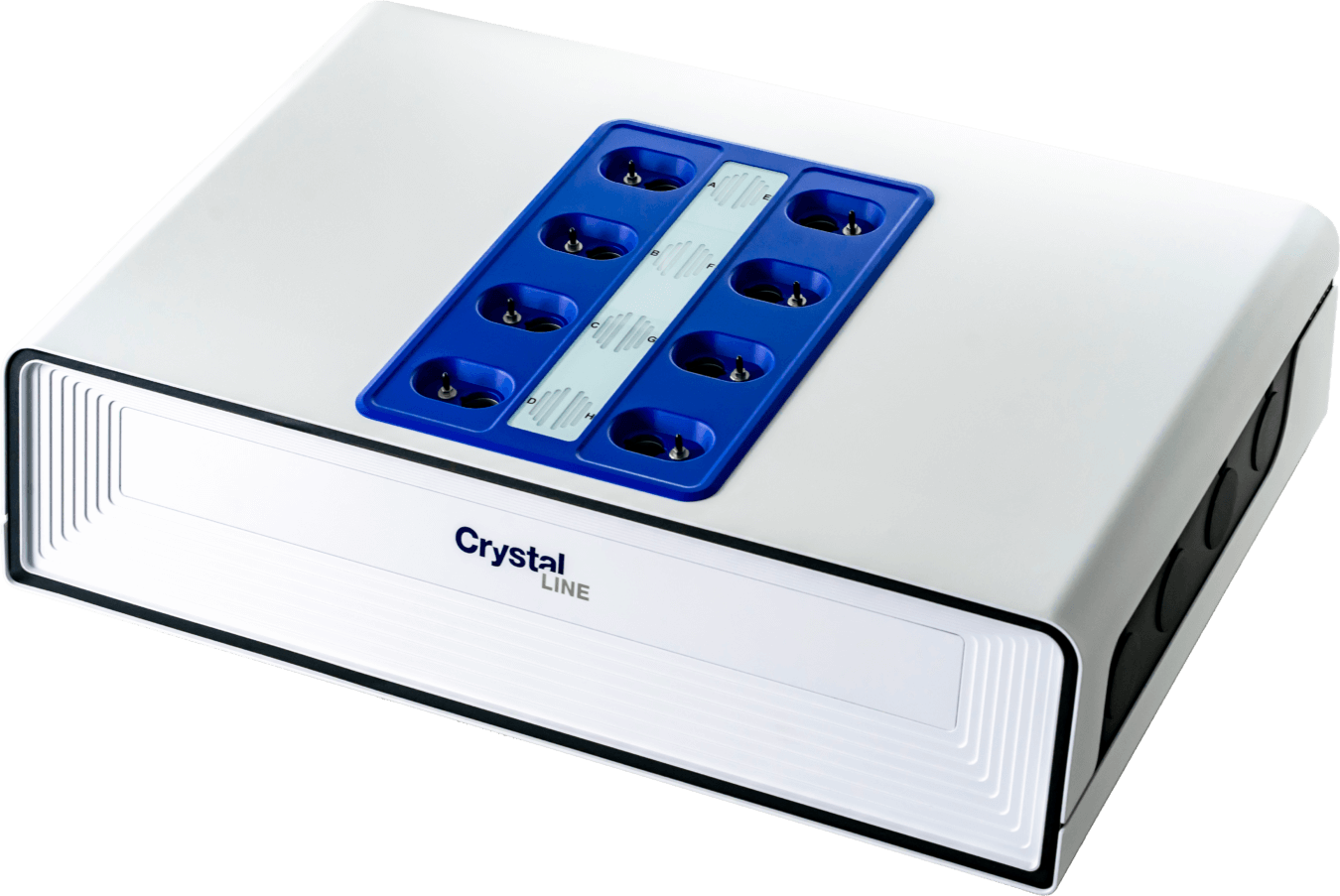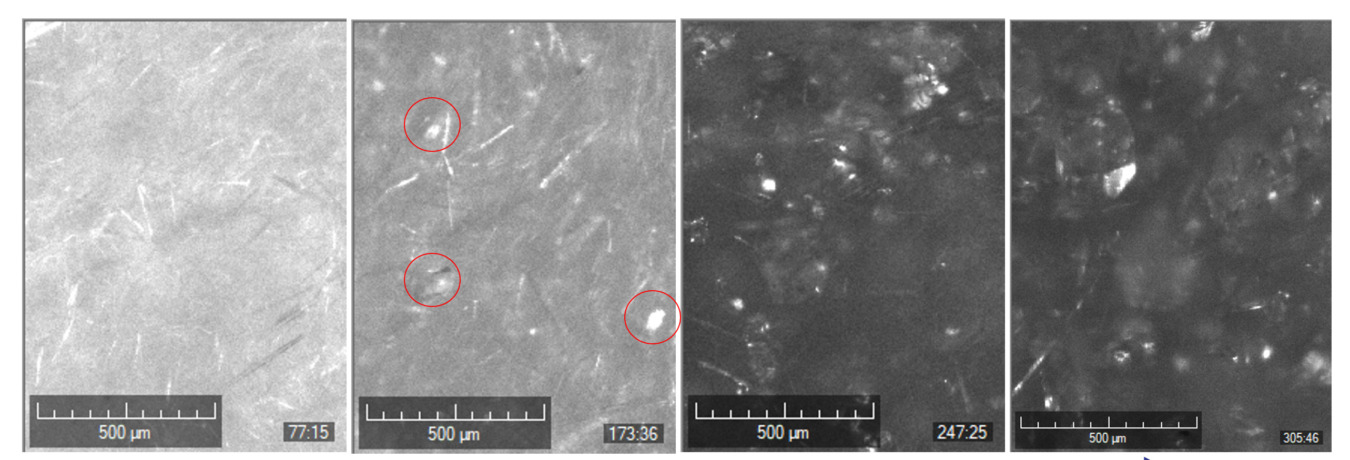Tracking polymorph and crystal morphology
In the manufacturing of solid dose formulations, crystallization is a commonly used process. A well designed and controlled crystallization process can be used to substantially improve the economical and biological performance of a drug molecule through exerting control over particle size distribution and morphology, polymorphic form, and purity. To maximize the benefits of a crystallization, a thorough understanding is required which can be done though modeling, design of experiment stress testing and the use of process analytical technologies (PAT). By undertaking the studies to generate understanding of a crystallization process at an earlier stage with less material, it is possible to accelerate the development of drugs to market by using the Crystalline device equipped with particle view cameras and a Raman spectrometer.
Controlling crystallization
The control of an industrial crystallization is of paramount importance, especially with a molecule that has multiple polymorphs. Different polymorphs can show completely different physical and chemical properties, and these differences can have drastic results on the therapeutic effectiveness of a molecule. These polymorphs will have a relative stability between them, one polymorph being the thermodynamic form and other a metastable form, and even trace amounts of the more stable polymorph can result in full conversion. Therefore, a crystallization process to produce a metastable polymorph requires a significant level of control and understanding at the molecular level. The invention of process analytical techniques (PAT) has allowed for the real time in-situ monitoring of various parameters, including concentration (FT-IR, UV-Vis), cord length (FBRM), morphology (particle viewer) and solid form (Raman). utilizing these technologies at the earliest stage of development can be of great benefit making it possible to gather significantly more information per experiment, reducing the number of experiments and consequently, the amount of material needed. Additionally, the detection of a process falling out of specifications (wrong polymorph or poor particle size distribution) can be mitigated through the implementation of feedback controls to salvage a batch.
Using the Crystalline instrument, it is possible to generate information about the solid form, as well particle size and morphology. By making use of the integrated particle viewer and Raman spectroscopy, one may accelerate the development process of the drug development at an earlier stage and respectively using less material.
Controlling Crystallization:
- Seeding Strategy - Control when and what Form of crystals appear.
- Modelling - Using solubility, growth kinetics and particle size data, models can predict crystallization processes.
- PAT - Inline, real-time analytics allow the monitoring of crystallization enabling feedback control strategies.

Morphology and polymorphism case study: Carbamazepine
Carbamazapine is an anticonvulsant used in the treatment of epilepsy and is commonly marketed as a solid dosage form. It is also one of the benchmark compounds in crystallization research as there are several known polymorphs. There are 4 known anhydrous polymorphs and a dihydrate form, with Form 3 being the thermodynamically most stable polymorph and Forms 1, 2 and 4 being metastable but readily obtainable through various crystallization procedures. It is possible to differentiate between Forms 2 and 3 using Raman spectroscopy as well as optical microscopy, as the two polymorphs show different morphologies: Form 2 needles and Form 3 blocks, respectively.
This experiment was conducted using the Crystalline instrument interfaced to a Tornado HyperFlux™ PRO Plus Raman spectrometer equipped with a Hudson™ probe (785 nm, total collection time of 15 seconds per spectrum). Carbamazepine (199 mg) was suspended in isopropanol (5 ml). The sample was then heated to 70 °C and held with stirring (700 rpm) until a clear solution was obtained. The solution was then crash cooled to 20 °C at 20 °C/min to induce crystallization and held at that temperature with constant stirring for several hours. After several minutes large amounts of fine needle-shaped crystals could be seen using the particle view camera of the Crystalline instrument. By making use of in-situ Raman spectroscopy on the Crystalline instrument, a peak was observed at 262.5 cm-1 indicating the formation of the kinetic metastable Form 2. After ~ 100 mins a few block-shaped crystals of Form 3 appeared, together with the emergence of peaks at 248 and 271 cm-1 in the Raman spectra. Over the course of the next 130 mins the amount of Form 3 increased as the metastable Form 2 converted.

Figure 1 Raman spectrum transformation for carbamazepine captured using the Tornado HyperFlux integrated with the Crystalline

Figure 2 Morphology transformation of carbamazepine Form 2 (needles) to Form 3 (Blocks) captured using the Crystalline instrument
Conclusions
We have demonstrated that by utilizing the Crystalline device coupled with a Tornado Raman spectrometer, it is possible to monitor and track polymorphism and morphology at low working volumes. Typically, the smallest commercial vessel where Raman spectroscopy and in-solution microscopy can be used as PAT tools is 100 mL, but by using the experimental setup described in this document it is possible to obtain the same data while working at scales as low as 2.5 ml. By working at these reduced volumes, the required material required for crystallization development can be significantly reduced. Solid form selection and research can be undertaken earlier in API development, increasing the speed they can reach manufacturing and become available to the patient.
Acknowledgements
Technobis would like to thank Mark Kemper from Tornado Spectral, and Paul Dallin and John Andrews from Clairet Scientific for their collaboration and assistance
References
F. Tian; J.A. Zeitler; C.J. Strachan; D.J. Saville; K.C. Gordon; T. Rades (2006). Characterizing the conversion kinetics of carbamazepine polymorphs to the dihydrate in aqueous suspension using Raman spectroscopy. J. Pharm. Biomed. Anal., 40(2), 271–280.
Ouyang, J., Chen, J., Rosbottom, I., Chen, W., Guo, M., & Heng, J. Y. Y. (2021). Supersaturation and solvent dependent nucleation of carbamazepine polymorphs during rapid cooling crystallization. CrystEngComm, 2021,23, 813-823